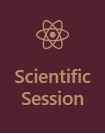Granulomatous Epulis in Maxillary Anterior Interdental Teeth
DOI:
https://doi.org/10.18196/imunity.v1i1.13Keywords:
Granulomatous Epulis, Oral Lesions, Excision, GingivectomyAbstract
Introduction: Epulis is a tumor-like enlargement of the gingiva originating from periodontal connective tissue, which is caused by chronic irritation. Epulis that occurs on the upper anterior teeth will disrupt the aesthetics and function of the lips and reduce self-confidence, so treatment is needed. Case report: The patient came to RSGM complaining that there was a lump on the upper front tooth and it felt painful. The patient had gone to the dentist regarding this case and was given topical medication, but the patient forgot the name of the medication. The patient's pain is aggravated when brushing his teeth and eating hard food or meat, for the taste is relieved when left alone. At the first meeting, patients are given information and education regarding the disease they are suffering from. Case management: The surgical phase by excision of the epulis with gingivectomy and subsequent curettage after surgical treatment of the gingiva. Discussion: Granulomatous epulis is a tissue mass that only exists in the gingiva which is richly vascularized, this lesion can grow to a certain size and stop growing. The etiology of granulomatous epulis lesions is usually caused by chronic irritation. Conclusion: Excision treatment and gingival formation performed with a scalpel can be considered for the treatment of maxillary anterior granulomatous epulis
References
Nauval, Rahmawati, “Prevalensi Epulis di Poli Gigi dan Mulut RSUP DR. MOHAMMAD HOESIN Palembang Periode Januari 2008 – Desember 2012”. Skripsi. (Palembang, Fakultas Kedokteran Universitas Sriwijaya 2013)
Salma Nurbaiti, Mentari, Mudiastuti, Kwartarini, “Management of Fibrous Epulis of Anterior Maxillary Teeth: A Case Report of a 1.5-Year-Old Lesion”. The International Online Seminar Series on Periodontology in conjunction with Scientific Seminar-KnE Medicine. Jurnal ilmiah, 2022, 333-342.
Mubarak, Husni, RasuI, Irfan, Nurwahida. “Management of giant fibromatous epulis: a case reportPenatalaksanaan giant fibromatous epulis: sebuah laporan kasus”. Jurnal ilmiah, Makasar Dental Journal. 2020: 9(2), 128-130.)
SW, Weiss, “Goldblum JR. Enzinger & Weiss’s Soft Tissue Tumors”. Edisi ke-6. USA: Mosby Elsevier; 2014.)
H, Jafarzadeh, M, Sanatkhani, N, Mohtasham. Oral pyogenic granu- loma: a review. J Oral Sci. 2006;48:167-75.
R, Kamal, P, Dahiya, A, Puri. Oral pyogenic granuloma: Various concepts of etiopathogenesis. J Oral Maxillofac Pathol. 2012; 16:79-82.
SW, Weiss, “Goldblum JR. Enzinger & Weiss’s Soft Tissue Tumors”. Edisi ke-6. USA: Mosby Elsevier; 2014.
JA, Svirsky , MJ, Wells, D, Eisen, WD, James, KM, ordoro. Oral Pyogenic Granuloma [internet]. New York: Medscape: 2012 [disitasi tanggal 4 Juli 2016].Tersedia dari http://emedicine.medscape.com/article/1 077040-overview#showall)
Asri Pari Purnomo Sari, Wahyuning. “Management of Suspect Granulomatous Epulis of Anterior Mandibular Teeth with Gingivectomy”. Jurnal ilmiah, Jurnal Ilmu Kedokteran Gigi. 2022: 5(1), 28-34.
RA, Robinson , SD, Vinvent, Benign and Non Neoplastic Disease. Dalam: Barnes L, Editor. Surgical Pathology of The Head and Neck. USA: Informa Healthcare; 2009. hlm 227-8.







